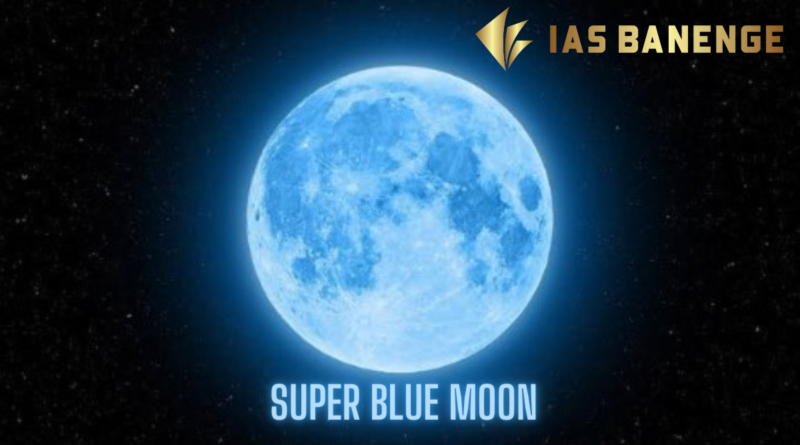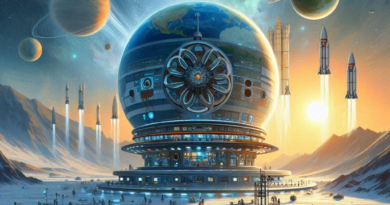Super Blue Moon | Ias Banenge
Context:
On August 30, 2023, the night sky was illuminated by a rare phenomenon: a super blue moon. However, despite its name, this full moon was neither blue in colour nor super in size. The last blue supermoon was in 2009, according to the National Aeronautics and Space Administration (NASA), and the next is not expected until 2037.
Relevance:
GS I: Geography
READ MORE – Production Linked Incentive (PLI) Scheme for IT Hardware Ias Banenge
Dimensions of the Article:
- Super Blue Moon: A Celestial Phenomenon
- Effects
Super Blue Moon: A Celestial Phenomenon
- It is a celestial event that combines the characteristics of both a supermoon and a blue moon.
Supermoon
- Occurs when the moon is in close alignment with Earth during its orbit, resulting in a larger and brighter appearance.
- This alignment, known as perigee, contrasts with apogee, the farthest point in the moon’s elliptical orbit.
- The term “supermoon” was coined by astrologer Richard Nolle in 1979.
- Near the horizon, an optical illusion may make the supermoon appear larger.
Blue Moon
- Represents the second full moon within a calendar month.
- Despite the name, a blue moon doesn’t appear blue; it’s a traditional label for the second full moon.
Misconception
- The name “blue” moon has no connection to the moon’s actual color.
- In rare cases, atmospheric conditions such as smoke or dust can scatter red wavelengths, creating a bluish appearance, but this is unrelated to the term “blue” moon.
Effects
- Supermoons exert a minor influence on tides due to increased gravitational pull.
- Resulting tidal fluctuations are generally too small to cause significant disruptions in coastal areas.
-Source: The Hindu





Pingback: Insurance for All By 2047:IRDAI’s Vision | Ias Banenge